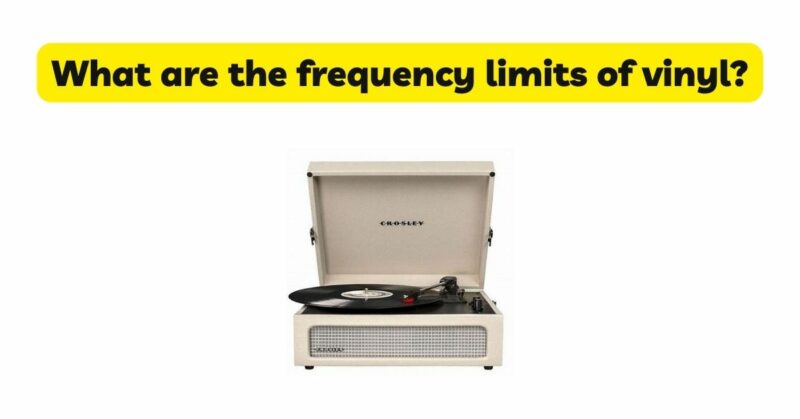Vinyl records have stood the test of time as a beloved medium for music enthusiasts, offering a unique and warm sound quality that digital formats often struggle to replicate. Understanding the frequency limits of vinyl is crucial for appreciating the sonic capabilities and limitations of this analog format. In this detailed article, we will delve into the frequency range of vinyl records, discussing the factors that influence it, and exploring how these limits contribute to the distinctive sound signature that vinyl enthusiasts cherish.
- The Basics of Vinyl’s Frequency Range: Vinyl records are physical mediums that store audio information in the form of grooves carved into the record’s surface. The frequency range of vinyl refers to the range of audio frequencies that can be accurately reproduced during playback. The audible frequency spectrum typically spans from 20 Hz to 20,000 Hz, encompassing the range of human hearing.
- Capturing the Audio Spectrum: When music is recorded onto vinyl, it undergoes a process of analog-to-digital conversion, where the original sound is translated into grooves on the record. The fidelity of this conversion process is influenced by various factors, including the mastering process, cutting equipment, and the skills of the mastering engineer. These factors collectively contribute to the capture and preservation of the audio spectrum on the vinyl record.
- The Role of Cutting and Mastering: During the cutting and mastering process, audio engineers carefully craft the grooves that will be etched onto the vinyl. This involves optimizing the frequency response and dynamic range to ensure accurate sound reproduction. However, it is important to note that vinyl records have inherent limitations compared to digital formats, which can impact the precise representation of audio frequencies.
- Low-Frequency Limit: The low-frequency limit of vinyl is primarily influenced by the physical properties of the record itself. As the grooves on the record become narrower and closer together, the ability to accurately reproduce low frequencies decreases. Typically, the low-frequency limit of vinyl is around 20 Hz, which is the lower threshold of human hearing. Frequencies below this limit may be attenuated or distorted during playback.
- High-Frequency Limit: The high-frequency limit of vinyl is determined by various factors, including the cutting process and the playback equipment. The standard high-frequency limit for vinyl records is approximately 20,000 Hz, which aligns with the upper limit of human hearing. However, it is worth noting that the fidelity of high-frequency reproduction on vinyl may be influenced by surface noise, distortion, and inherent limitations of the playback system.
- Surface Noise and Distortion: Vinyl records are susceptible to surface noise and distortion, which can impact the accuracy and clarity of the audio reproduction. Surface noise, such as clicks, pops, and hisses, can arise from imperfections in the vinyl, dust particles, or wear on the stylus. Distortion can occur due to various factors, including groove wear, tracking errors, or limitations of the playback system. These factors can contribute to the perception of frequency limitations in vinyl playback.
- Perceived Warmth and Character: Despite the inherent frequency limitations of vinyl, many enthusiasts appreciate the unique sound signature that vinyl records offer. Vinyl’s analog nature, along with its limitations, imparts a distinctive warmth and character to the sound. The compression and harmonic distortion introduced during the recording and playback process contribute to a pleasant and nostalgic sonic experience that digital formats often strive to replicate.
- Audiophile Considerations: For audiophiles seeking the highest level of sound fidelity, it is worth noting that vinyl records, while cherished for their unique sound, may not achieve the same level of accuracy as digital formats. Digital formats, such as CDs or high-resolution audio files, have the potential to capture a wider frequency range and dynamic range compared to vinyl. However, the subjective enjoyment and emotional connection that vinyl offers cannot be easily quantified by technical specifications alone.
Conclusion: Understanding the frequency limits of vinyl is crucial for appreciating the sonic characteristics and limitations of this analog format. Vinyl records have a frequency range that spans from 20 Hz to 20,000 Hz, encompassing the audible spectrum of human hearing. However, factors such as the cutting process, physical properties of the record, surface noise, and distortion can impact the accurate reproduction of frequencies within this range. Despite these limitations, vinyl records offer a unique and beloved sound signature that is often associated with warmth, character, and nostalgia. Ultimately, the enjoyment of vinyl goes beyond technical specifications, as it captures the emotional and immersive experience of music playback.

